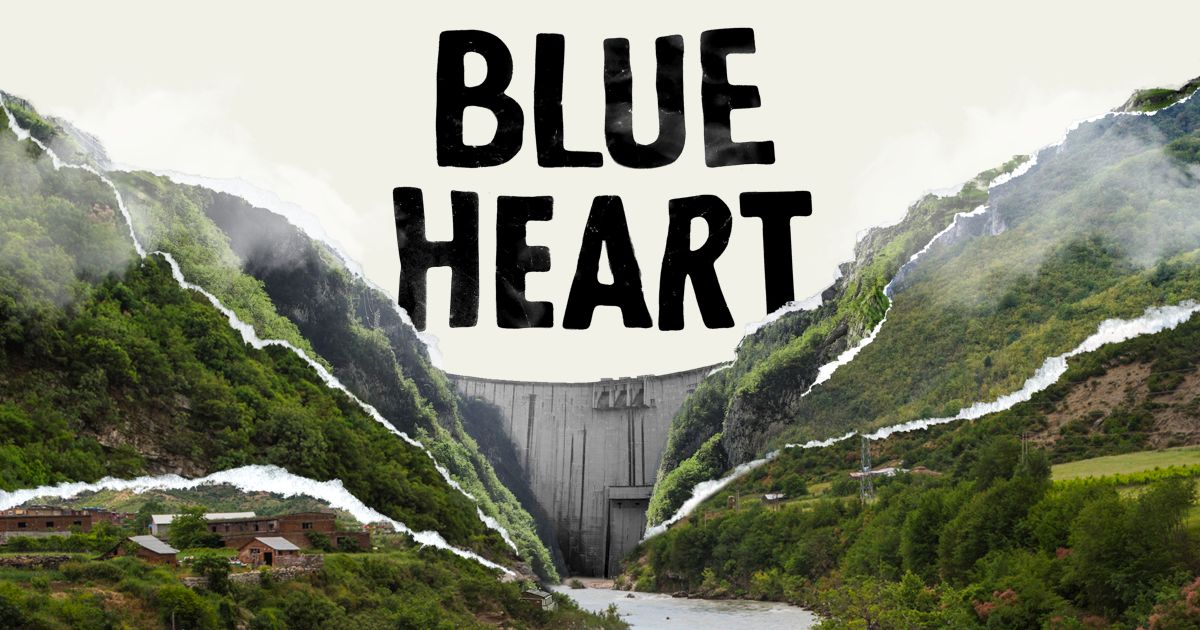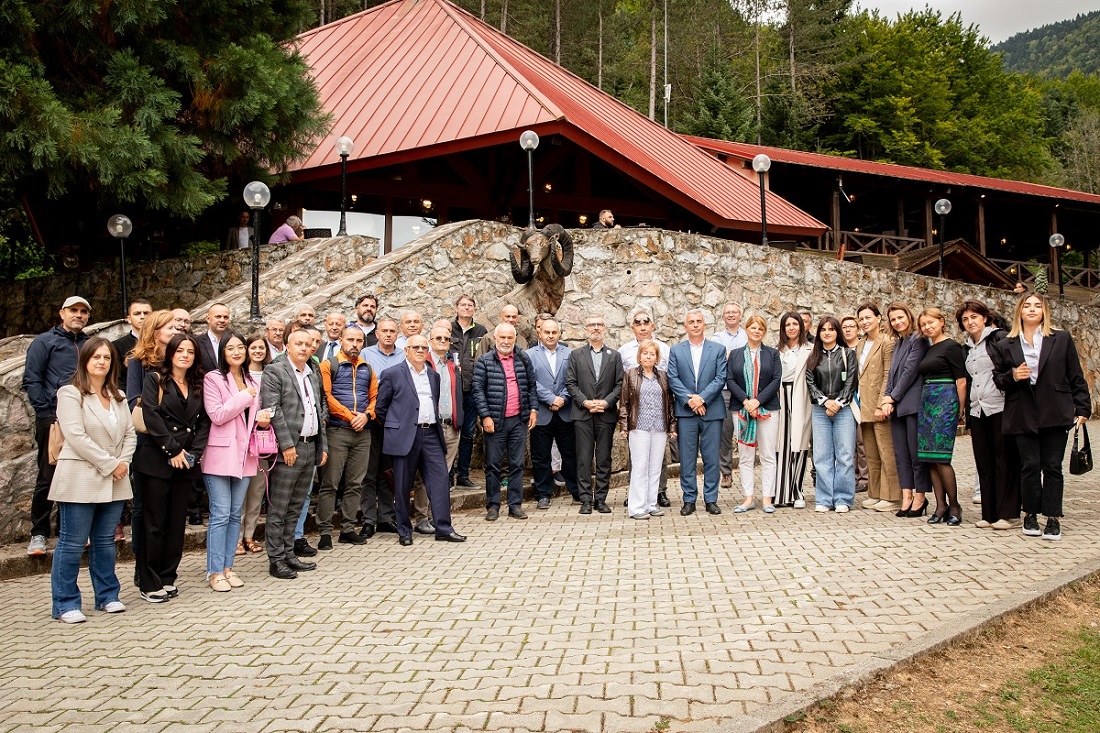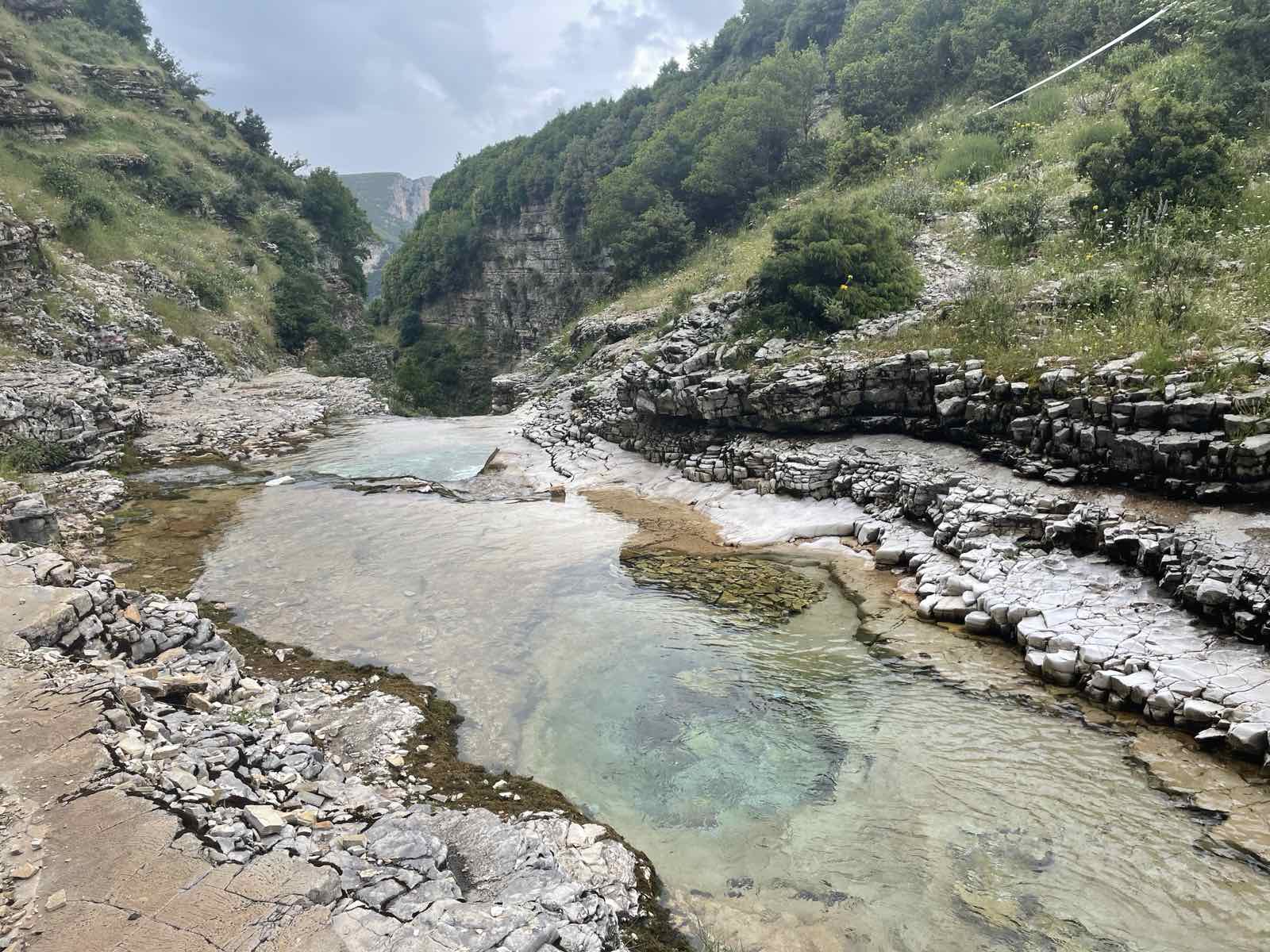IUCN helps protect Vjosa in Albania, the last wild free-flowing river in Europe
By Julia Horwitz
Vjosa is one of the last wild free-flowing rivers in Europe. As part of the “Blue Heart of Europe”, this beautiful river contains at least 11 major tributaries coming in from Greece and Albania, and is 272km long. The Albanian government has committed to protect this untouched river ecosystem as part of their national commitments to halt the global biodiversity and climate crises. To achieve effective conservation of the Vjosa River, the Albanian Ministry of Tourism and Environment is in a unique and supportive partnership with the eco-friendly company Patagonia, with local civil society and environmental groups, and with the technical support of IUCN. However, achieving full conservation of this river will require solutions to many difficulties and issues. Without commitment to protection, the river is faced with numerous hydro and infrastructure project proposals, but with the help of local conservation organisations and IUCN’s guidance, this river can be effectively protected. IUCN defines all protected areas as “A clearly defined geographical space, recognized, dedicated and managed, through legal or other effective means, to achieve the long-term conservation of nature with associated ecosystem services and cultural values”. The commitment by Albania is to secure a designation for Vjosa that clearly falls under the definition of a protected area. To further note, the plan is to develop an IUCN category II protected area, an “area to be managed for ecosystem protection and recreation”, and to align its future management to the IUCN Green List Standard for equitable and effective protected areas.
BACKGROUND INFORMATION
Nearly 30% of the Aoos-Vjosa river, including the source, lies in Greece, with the other 70% flowing through Albania and emptying into the Adriatic Sea. This beautiful riverscape is filled with meanders, oxbow lakes and canyons. However, the most outstanding thing about this river are the tributaries. Stretching along Greek and Albanian territories, the tributaries are mostly free flowing and relatively untouched by human activity. As our world develops day by day, and we are becoming increasingly obsessed with trying to own and fix things, we must also ensure we safeguard those unique places and processes which are not yet broken. Along with that, as the population of our world grows each and every day, so does the need for resources, space and economic growth. In this specific case, electricity, in part generated by Hydro Electric Power (HEP) is in high demand. Another aspect is the history of the region and the river itself. Like everywhere on our planet, there are cultural and traditional memories attached to the land. Vjosa specifically, has a large community of people who live on the floodplain and who use the water for everyday necessities. Some people require it for farming or agricultural reasons due to the soil being so fertile and having such close proximity to water. People benefit from living in/near a national park due to the environmental advantages that it presents. Indeed, the majority of local people and communities support this conservation project, which is an essential foundation for nature conservation.
A group of active environmental NGOs have launched the campaign of “Save the Blue Heart of Europe”. This campaign has played a large role in the information regarding the river itself as well as its surrounding areas. It supports the goal to turn Vjosa into a national park that meets IUCN Standards, and halts all future HEP plant development.

ACTION
More than a year ago, the Albanian Government declared the Vjosa Valley to become a protected area. Since then, IUCN has been working in support of effective protection for the Vjosa and its free-flowing tributaries, to bring them under conservation management. Working alongside outdoor apparel brand Patagonia, and fully supporting the Government of Albania, with local NGOs, the next step is to create a master plan for how the vision of effective management can be legally implemented and operational, in full consultation with local stakeholders.
VJOSA WILD RIVER CONSERVATION OBJECTIVES
- Preserve the wildlife and ecosystem (multiple species that are currently under the risk of extinction).
- Support environmental processes.
- Keep the “ecological structure” the same in order for it to be able to flourish and continue to grow.
- Regulation of compatible and complementary activities.
- Assess the potential for small and medium enterprises to engage in compatible economic activities, such as ecotourism
- This includes excluding activities that will disturb/destruct the environment such as mining, extraction, pollution, etc.
- Keep the free-flowing river untouched.
- Essentially, to restrict infrastructure development, especially HEP plants and impactful industry
ISSUES
Whilst completing such a lengthy and resource-intensive planning process, it is important to think about all of the sides of the story and who is involved. Although Albania faces some economic and development challenges, the commitment to Vjosa is a globally-significant statement of intent. This river and its tributaries could potentially be used for hydroelectric power (HEP) plants, so international support to help offset any opportunity cost and maximize incentives and benefits from conservation must be explored.
Besides direct impacts, there are also already high rates of pollution associated with infrastructure and industry. The threats to the valley itself include:
- Land degradation
- Urbanization
- Small HEP plants
- Extraction/mining (of both oil, water and gravel)
- Intensification of agriculture
- The development of tourism.
As the IUCN continues to support protection for Vjosa and the surrounding areas, there is a need to keep highlighting the local and regional benefits of protection, as well as the global significance. In terms of biodiversity, there could be a risk of further loss without effective protection. There are many migratory species (birds and fish) whose homes in the Vjosa river are under threat from any infrastructure-related impacts.
CONCLUSION
IUCN’s objective is to help the Albanian Government and partners to achieve a continuous, fair and effective, long term and sustained conservation result for one of the last free-flowing wild river in Europe. Through the help of mitigation techniques, support from our members and partners, political will in Albania, and the prolonged hard work, there is no doubt that Albania shall succeed in its goal for Vjosa. The hard work will continue day-and-night to 2030 and beyond, but IUCN, will support Vjosa over the long-term. That is what conservation truly requires! To support IUCN and Albania in protecting the Vjosa, please get in touch and join the Blue Heart Campaign!
BIBLIOGRAPHY
Protection Study of the Vjosa River Valley Based on IUCN Protected Area ... https://portals.iucn.org/library/sites/library/files/documents/2021-011-En.pdf
“Eu Nature Restoration Law: A Boost for Biodiversity and Climate.” IUCN, 28 June 2022, https://www.iucn.org/news/europe/202206/eu-nature-restoration-law-a-boost-biodiversity-and-climate
“Vjosa National Park Now.” Save the Blue Heart of Europe, https://www.balkanrivers.net/en/vjosanationalparknow
The Fauna of the Vjosa River and the Adjacent Floodplain at POÇEM. https://balkanrivers.net/uploads/legacy/Vjosa_assessment_201709.pdf
Freeman, Liam. “How Patagonia Are Fighting to Save Europe's Wild Rivers.” I, 13 June 2022, https://i-d.vice.com/en_uk/article/n7zj7m/patagonia-river-vjosa-interview



